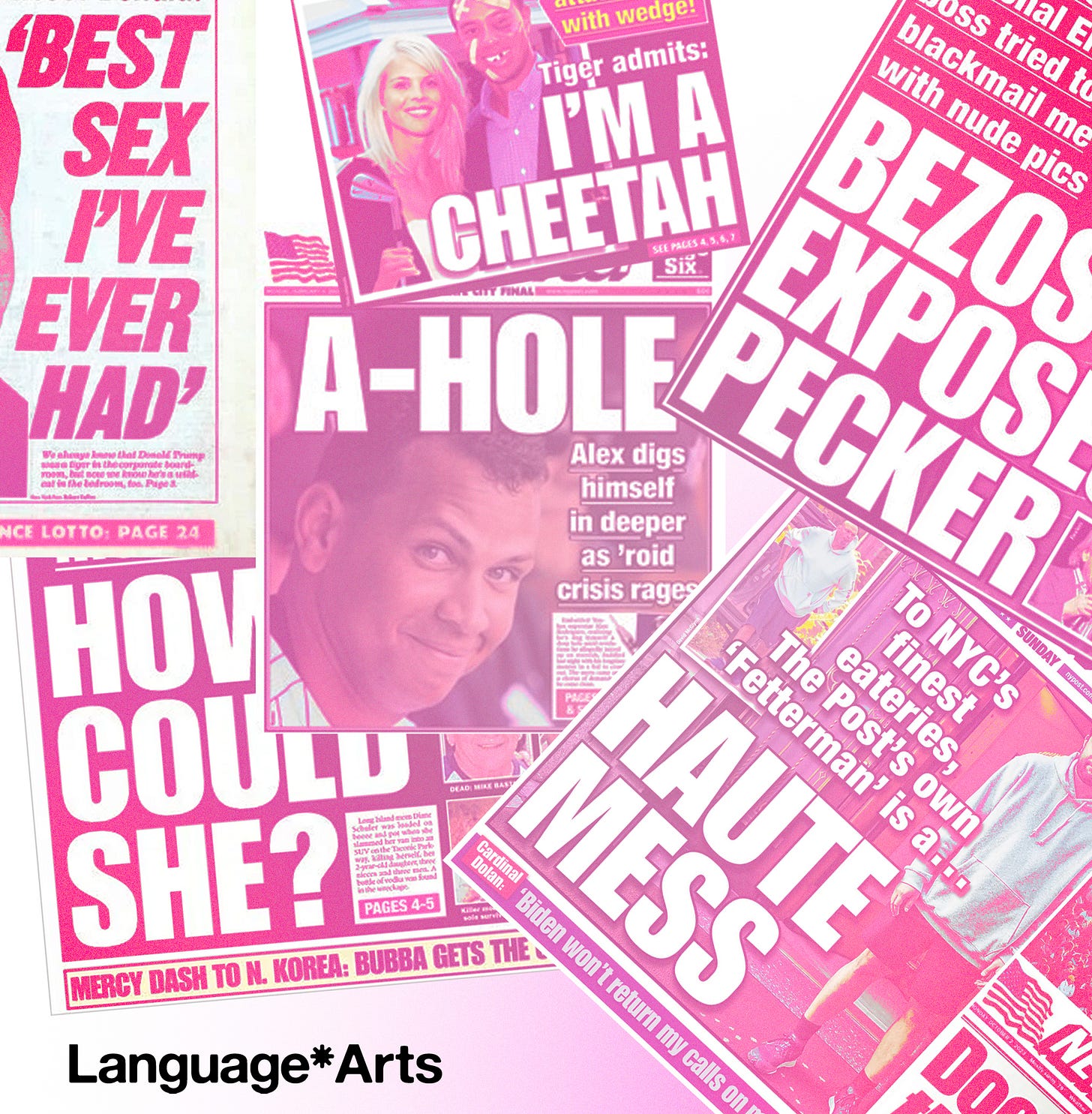Nomi’s New York: Books On NYC High Society
It's Nomi Leigh's New York, you're just living in it.
In this special edition post, we hand it off to friend and patron of Language Arts, Nomi Leigh, who takes us through her favorite books on New York high society. There’s divorce, scandal, ragging on “male allies,” boozed-up WASPS, and more. Pinkies up, darlings…
Bonfire of the Vanities by Tom Wolfe
The cultural reception of Bonfire has always reminded me a bit of Bret Easton Ellis’ American Psycho. Both were initially seen as indictments of Reaganism from the critical lens of the early ‘90s, but in recent years have enjoyed a cultural rebirth fueled by young people who just find the whole thing really fucking cool. The cast of characters in Bonfire is so quintessentially New York that I feel like I’ve met all their contemporary versions in today’s city. My favorites were Arthur Ruskin, the arriviste Jewish businessman who got rich chartering flights for Arabs making Hajj; Reverend Bacon, the clever but cynical huckster and Al Sharpton stand-in; and a self-effacing white woman who attends all of Rev. Bacon’s racial justice protests in the Bronx.
Trying to Float: Coming of Age in the Chelsea Hotel by Nicolaia Rips
I thought Nicolaia might kill me when I told her I wanted to include her book on this list (“It’s the Chelsea Hotel — it’s a shit hole…It isn’t the Plaza” she once told W Magazine when they inquired about how luxurious her childhood was) but fortunately she was a good sport about it. What I loved about this book is how distinctly New York it is — I’ve always been a bit jealous of people who got to experience the freedom of teenage life in the city, and nobody did it quite like Nicolaia. From being neighbors with an armed Stonewall riot legend to navigating the cartoonishly competitive NYC school scene, there is nowhere else in the world that her story could’ve taken place.
Valley of the Dolls by Jacqueline Susan
I didn’t say these were the best books about New York high society — just that they were my favorite. Valley of the Dolls is admittedly a pretty poorly written piece of fiction (the book was dedicated to her poodle, after all.) But it’s an unbelievably fun peak into the decadence of post-war New York’s entertainment industry. Susan is surprisingly tactful in handling some themes that were quite touchy at the time (particularly abortion and divorce), and her depiction of various washed up former starlets is at once both heartbreaking and hilarious. Being an aging woman is difficult anywhere, but at least it’s a bit more glamorous in New York.
The Age of Innocence by Edith Wharton
There were probably a few of Wharton’s novels I could have included here, but The Age of Innocence has always charmed me the most. Through the character of Newland Archer, Wharton mocked insincere “male allies” a century before doing so was in vogue. It really shows the degree to which Wharton grew more nuanced compared to her earlier works like The House of Mirth, and it manages to effectively merge biting social commentary with a tragic and heartfelt moral core.
Rosemary’s Baby by Ira Levin
A lot of people have probably seen Roman Polanski’s (admittedly great) film without reading the book that inspired it — but they should! Not only is Levin’s novel better paced than the movie, it also contains a level of gore and violence that Polanski couldn’t capture on the screen for obvious legal and ethical reasons. The gothic-style Dakota on West 72nd Street was the perfect location to film the movie and capture the spirit of the book, overwhelmingly posh and creepy in a way few other parts of the city are.
Dead End Gene Pool by Wendy Burden
The only thing more fun than reading about the ultra-rich is reading about the once-ultra-rich after the money dries up. Burden’s tell-all memoir introduces you to her family, a fascinating and tragic cast of characters overseeing the disappearance of what was left of Cornelius Vanderbilt’s fortune. While most of the mockery of these characters feels lighthearted and whimsical, Burden’s treatment of her mother is more poignant, nuanced, and memorable. Perhaps the real star of the show is the booze — nobody drinks quite like a New York WASP, as Burden knows all too well!
Fleishman Is in Trouble by Taffy Brodesser-Akner
The newest edition to my faves, Fleishman Is in Trouble is the semi-autobiographical story of a New York marriage unraveling. Brodesser-Akner made the interesting choice of writing the novel from the (sympathetic, but at times sexist) man’s point-of-view, which she says was her way at chipping away at the cliché of the heartbroken man in fiction. Despite being centered around a man, the book left me with so much more insight into the lives of a certain group of upwardly mobile uptown millennial-to-Gen-X-cusp Manhattan women.
Ex-Wife by Ursula Parrott
Not to harp too much on the divorce theme, but Ex-Wife has a special place in my heart. When my friend recommended I read an account of a young woman getting divorced in the ‘20s, I couldn’t have imagined the degree to which I’d see myself in Patricia, Parrott’s young protagonist and semi-fictionalized version of herself. I was hooked from the first pages when Patricia said, “He grew tired of me…He hunted about for reasons to justify his weariness, and he found them.” What follows is a story that scandalized Jazz Age audiences, and it’s not hard to see why. It’s Sex and the City seventy years before Sex and the City — young, sexually liberated women in lonely New York apartments dealing with the consequences of free love and suitors who never quite know what they want. Sounds familiar!





